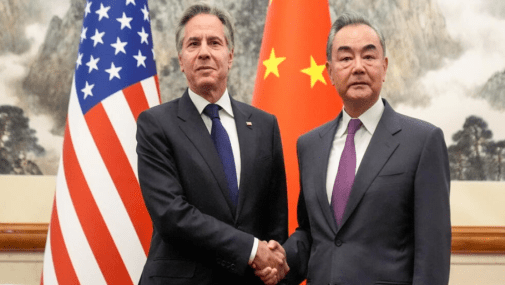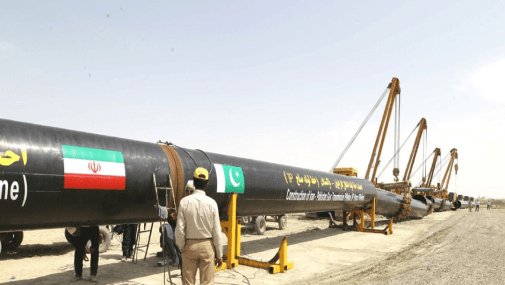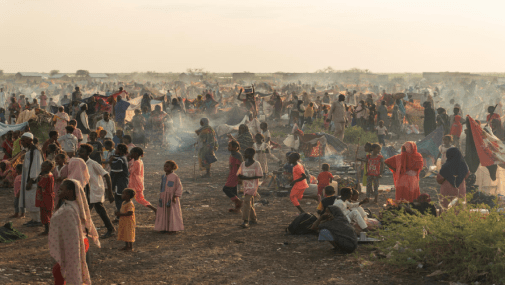US airstrikes kills civilians?
March 21, 2019 | Expert Insights
For years, the Pentagon has maintained that no civilians have been killed in American airstrikes and raids in Somalia. Amnesty International, in a new report released on March 19 2019, put the death toll at 14 since 2017 alone.
Background
The Pentagon, in Arlington County, Virginia, across the Potomac River from Washington, D.C., is the headquarters of the United States Department of Defense. As a symbol of the U.S. military, the phrase The Pentagon is often used as a metonym for the Department of Defense and its leadership.
Amnesty International (commonly known as Amnesty or AI) is a London-based non-governmental organization focused on human rights. The organization says it has more than seven million members and supporters around the world. The stated mission of the organization is to campaign for "a world in which every person enjoys all of the human rights enshrined in the Universal Declaration of Human Rights and other international human rights instruments."
In a drone strike, an unmanned combat aerial vehicle fires a missile or releases a bomb at a target. The drone may be equipped with such weapons as guided bombs, cluster bombs, incendiary devices, air-to-surface missiles, air-to-air missiles, anti-tank guided missiles or other types of precision-guided munitions. Since the turn of the century, most drone strikes have been carried out by the US military in such countries as Afghanistan, Pakistan, Syria, Iraq, Somalia, and Yemen using air-to-surface missiles.
Drone strikes are largely used for targeted killings, reducing collateral damage and avoiding boots-on-the-ground.
Analysis
The report linked the killings to President Trump’s decision to relax rules for preventing civilian casualties during American counterterrorism strikes in Somalia. Amnesty said it examined five airstrikes that killed 14 civilians and injured eight.
“In the incidents presented in this report, civilians were killed and injured in attacks that may have violated international humanitarian law and could, in some cases, constitute war crimes,” the report said.
It called into question repeated claims by United States Africa Command that there have been no civilian casualties from American strikes against the extremist Islamist group known as the Shabab. The report also attributed the discrepancy to failures by the American military and the Somali government to adequately investigate claims that civilians were killed in airstrikes and raids by United States forces.
Africa Command disputed the report’s findings and maintained it had killed zero civilians in Somalia. “Our assessments found that no Africom airstrike resulted in any civilian casualty or injury,” the command said in a statement.
Instead, American military officials said, extremist groups in Somalia are making up casualties and coercing locals to make false claims of civilians killed. “Al Shabab and ISIS-Somalia have a history of placing their forces and facilities in and around civilian locations to conceal and shield their activities,” the statement said.
However, during a conference call on Tuesday with reporters, Defense Department officials acknowledged that it was difficult to verify civilian casualties because most American airstrikes and raids take place in areas that are controlled by the Shabab.
Before Mr. Trump took office, the military was generally required to follow standards that President Barack Obama imposed in 2013 for counterterrorism strikes beyond Afghanistan, Iraq and other conventional war zones.
Those rules, known as the Presidential Policy Guidance, required high-level interagency vetting of proposed strikes. They also said that the target must pose a threat to Americans and that there must be near certainty that no bystanders would die.
In March 2017, Mr. Trump signed a directive declaring parts of Somalia an “area of active hostilities,” where war zone targeting rules would apply. Under the new guidelines, Africa Command could treat Somalia under less restrictive battlefield rules. Without interagency vetting, commanders could strike suspected Shabab fighters even without reason to believe they posed a threat to Americans.
In addition, the guidelines opened the door to permitting some civilian deaths if deemed necessary and proportionate to the threat.
Assessment
Our assessment is that the logic behind drone strikes was to ensure minimal casualties and avoid civilian deaths by way of targeted killings but this incident proves the opposite has occurred. We believe that the US is accountable for death caused by its missiles and if there are proven civilian casualties.








Comments